A few Podcasts ago we were joined by John Hayes to discuss if Social Marketing Is a Waste of Time (For Product Based Businesses). In that Podcast we touched upon John’s book “Becoming The Expert” and myself and Matt have both read the book and we knew that it was worthy of a Podcast in its own right.
In this Podcast we ask the questions that you may have about Becoming THE Expert and this supporting article will detail the Q & A session that we had with the author John Hayes and will hopefully answer some of the questions about how YOU can become THE expert.
In this Podcast there is myself Dave Furness, Andy Hamilton the best-selling author of Booze For Free, Our special guest for the second time the author of Becoming the Expert John Hayes, and of course the man who needs no introduction LastDropofInk’s very own Matt Ogborne.
[powerpress]
Because this is may be new to you, above is a green play button. Press play and you’re listening!
If you’d like to download the Podcast for listening to on your iPhone, Droid or iPad you can do or you can press the “Play in new window” button to be able to listen to the Podcast while browsing. If you use iTunes you can subscribe here for free.
Matt’s Comment: There are a few of these comments and for the first one a special “thank you” to Dave for putting this article together for us.
Q1: What is Thought Leadership Marketing?
To fully appreciate what Thought Leadership Marketing is we must first define the term as a thought leader. As John says in the Podcast a Thought Leader is someone who positions themselves as an expert in their own particular industry and becomes known amongst their peers for being an expert.
The concept of Thought Leadership Marketing is using this expertise to help build a brand and generate leads within their chosen industry and ultimately drive sales.
A “Thought Leader” is someone who positions themselves as an expert in their own particular industry and becomes known amongst their peers for being an expert
The key to this concept comes in two parts. The first part is securing yourself or your brand as a Thought Leader, ensuring that people know that you are at the forefront of your industry and a reliable source of knowledge in your area. Once you have that secure you can then move into the second part which introduces the marketing concept.
Distributing their thought leadership through a number of marketing channels so that their voice is heard and people look to them for information further securing them as Thought Leaders.
Channels
As John mentions, there are a number of channels that are open to thought leadership marketers. Some of they key ones are:
- Blogs
- White Papers
- E-Books
- Podcasts
- YouTube
These are just a few of the most common forms of channels available for Thought Leaders to use, and John recommends that the first port of call should be a blog.
So if you are trying to secure yourself as a thought leader in your own right, or as part of a brand, you really should ensure that you have a Blog which is kept up to date as this is the first step in getting your information seen and growing an audience. From there you can then expand into other channels.
Q2: What does it mean to be a thought leader and do you have any examples of thought leaders the listeners or readers could relate to?
There are a number of thought leaders out there who are all prominent in their own niches. In the Podcast I mention one of mine and Matt’s favourites that is Pat Flynn who runs the SmartPassiveIncome.com from the USA.
Pat has even commented on a few of the posts here on Lastdropofink. The key here is that every niche will have their own thought leaders and the aim here is to secure yourself as the thought leader in your chosen area.
John also mentions Scot Wingo the CEO of ChannelAdvisor as one of the first Thought Leaders he came across during his time at Channel Advisor. Scot had wrote a book, which in itself for anyone who has blogged before knows is no small feat called “Ebay Strategies: 10 Proven Methods to Maximize Your Ebay Business“.
The book that Scot wrote was incredibly easy to read was bang up to date for it’s time and it was written in Plain English that anyone could read and understand. This point in itself is what differentiates someone who knows their industry from a Thought Leader.
Being able to communicate a subject that you are passionate about which has a lot of depth but in a manner which isn’t confusing
You can still be an expert but if you are unable to communicate effectively to your audience, you will never be a Thought Leader. By being able to communicate a subject that you are passionate about which has a lot of depths but in a manner which isn’t confusing, doesn’t use a lot of industry buzz words and doesn’t aim to alienate those who may not understand the terminology. Scot does this incredibly well still to this day in his blog for Channel Advisor still very up to date but in plain English.
Thought Leaders are not restricted to the technology sector we hasten to add, our very own Andy Hamilton is the perfect example of this, Andy is regarded as a thought leader in Home Brewing and Foraging, and because he is a very good communicator people turn to him as the expert in his field which has led him into numerous television and radio appearances to discuss his industry in detail. (Matt’s comment: Andy was recently on the Alan Titchmarsh show)
The message here is, every niche or industry needs Thought Leaders almost as village elders who others turn to for advice. John calls himself a Storyteller and this is a perfect fit for a Thought Leader.
If you think of childhood stories, most of them have a meaning or a message and that is wrapped up in a story to give it a deeper meaning. This is a very clever tactic which is used by many Thought leaders to get a message across to their audience.
A top tip that Matt shares in the Podcast is to write your content as if it was for a 6 year old
A top tip that Matt shares in the Podcast is to write your content as if it was for a 6 year old. If you keep your content interesting enough and simple enough for a 6 year old to be able to read and understand. By doing this, you don’t over-complicate the subject and keep it in Plain English.
A good example of this is the Financial Times newspaper which covers incredibly in-depth topics, but at a level that anyone could pick up and understand. John finishes off the topic nicely by explaining how due to the Internet it is very easy for people to at first ‘seem’ like they are Thought Leaders or to come across as such in their writing, as it is incredibly easy for anyone to put content out there these days.
A true Thought Leader has made the experience in what they write about, it isn’t just an opinion it is based on real life, they have made the mistakes, learnt from them and are passing these onto others, and that is where the true value of a Thought Leader comes from.
Q3: Is it a case of being across as many channels as possible…or, doing a few channels REALLY well when it comes to though leadership, basically is it quantity or quality?
The key point to take away on this question is to make sure the channels that you are working on are at a good standard before moving on to a new channel. The first port of call for a potential Thought Leader is to have a blog.
Once the blog has good content it is natural to link this into social media and likewise video content is great for Blogs too as well as standing alone on the YouTube platform. Don’t make the mistake of trying to run before you can walk.
Matt’s Comment: As we cover in the Podcast, the Blog, just like your eBay Store, becomes the hub for your business, get the hub in place and you can start adding to it, however you see fit.
Make sure that your blog is kept up to date and is at a sustainable place before you branch out into other areas. John states in the Podcast:
Don’t overstretch yourself, you are better off with 2 or 3 well managed channels than 10 poor channels.
The blog is they key stone of your marketing efforts. Blog posts can be mentioned in YouTube video’s they can be shared on Social Media sites, they can be linked to in forum posts, they are great for promoting products such as books etc. Which is why the Blog should be the first port of call, and then look for how the other channels can create a web of content which all link in to each other to set up this personal information network.
This can either be for your personal industry or to further the content creation and network of your brand. Quality is the key when it comes to becoming a Thought Leader and it is something that will largely revolve around your experience. You cannot pretend to have experience and if you try it the chances are you will get found out very quickly.
If you are the thought leader and you create quality content, then the audience will read what you have to say. Matt makes a crucial point in the Podcast which is that it is critical to interact with people who get involved with your marketing. When you start writing blog posts in the beginning no one will read them, but over time they will start to attract visitors and you will grow your audience.
People may start asking questions or commenting on your content. To be a good Thought Leader it is brought back to communication, you must reply to these questions or comments to further solidify your position as the leader. By talking about your experience and testimony then you are helping to create even more of an impression that you have been there done it and you are the expert.
Q4: What actionable steps can our listeners use right now in their businesses to leverage this to their advantage?
The first thing is BLOG! Get good quality unique content on there and start building your brand. If you don’t know where to start with this, or you’re struggling for blog post ideas, let us know in the forums here and the community will do their best to help you.
No-one will read your blog in the early days but as it grows and the audience grows…
Andy again states here that the key is to have patience when it comes to blogging, but to stick at it. To repeat no-one will read your blog in the early days but as it grows and the audience grows it is key to keep the content coming.
A blog which hasn’t been updated in 12 months can give the impression that the business has failed and this can have the total opposite effect in positioning you as a Thought Leader. Never blog about something that isn’t quality content, don’t feel that you have to stick to a timetable, but if you are struggling to find something to write about, then as John says, it may be time to get a new job.
Matt’s Comment: Completely ignore SEO, you can never go wrong with this simple rule, “Quality, Unique Content”. It never fails and you can worry about the other parts later.
The natural progression from blogging is to build a social network audience. Don’t use it as a sales channel, but use it to build interaction with potential customers so they get to know you as a business or person. This again solidifies your brand and shows that their is a human behind the facade of a business an this is important as people like to deal with people.
The key point that Andy mentions is listen to what your audience are asking for, or commenting on, and write blog posts on these topics to almost encourage interaction and the likelihood of it being read. Two Top Tips to take away from this Podcast
- Once your business is up and running start a blog, and make sure you turn up regularly with fresh unique content, set yourself a manageable goal to ensure the content gets created, and make it a habit.
- Use the blog and therefore it’s audience to feed the e-commerce site and vice versa, create this web of intelligent content based around yourself. Using social media and other channels to link the content together and pull the audiences in from the different available spaces.
*Bonus Content*
To help you get started I’ve compiled a list of 10 potential starter blog posts for your business blog. 10 Starter Blog Posts:
- Introduction of You/Your Business
- Product/Service Review
- Your favourite book review which relates to your industry
- Latest news within your industry
- Christmas (Everyone has something to say about Christmas)
- A problem you had and how you overcame it
- A competition blog post
- A picture gallery post of either your business, processes, staff or key products
- An opinion piece on a certain technology or news piece in your domain
- A post looking to future trends within your industry
Matt’s Comment: A really good example of #7 is from Pete Moran, who joined us for Podcast #2. Pete has just started a competition today on his site called “Guess That Thing”, take a look at it here, I have no idea what it is, do you?
Q5: Where can people find out more about you John and Thought Leadership Marketing?
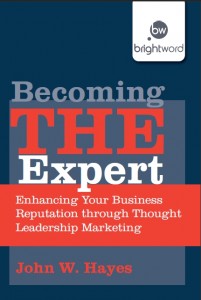 John really is the Though Leader in marketing and we would like to thank him again for being our guest on this Podcast.
John really is the Though Leader in marketing and we would like to thank him again for being our guest on this Podcast.
The truth is however that we have barely scraped the surface on what his book “Becoming the Expert” covers. So if you found this podcast useful and want to take it to the next level we would strongly recommend buying John’s book.
It’s available on all digital e-reader devices and can be found in all the main digital e-bookstores. See below for the Becoming the Expert website and the link to his publisher where you can get all the information on where to get hold of his book. Likewise if you want to get in touch with John on twitter we have included his Twitter name below too.
John Hayes
 John’s Hayes | Blog | @john_w_hayes | LinkedIn John’s Book “Becoming THE Expert: Enhancing Your Business Reputation through Thought Leadership Marketing” is now live and you can purchase via his publishers site here.
John’s Hayes | Blog | @john_w_hayes | LinkedIn John’s Book “Becoming THE Expert: Enhancing Your Business Reputation through Thought Leadership Marketing” is now live and you can purchase via his publishers site here.
Your Feedback
If you have any questions about what we covered with John in the Podcast, let us know by leaving a comment below.


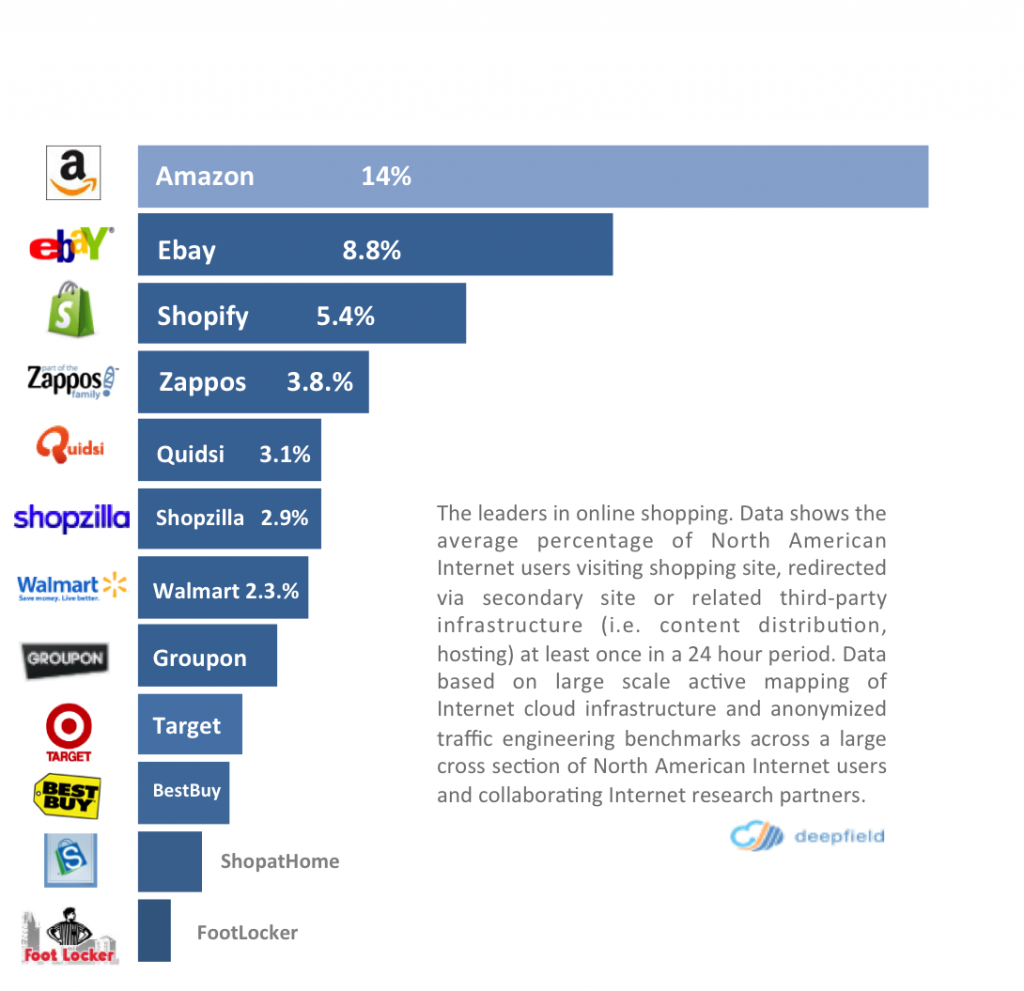
 Sam is the prime example of an entrepreneur, Sam, is just like you & me, we are wired differently and you do what comes naturally to you, adapt.
Sam is the prime example of an entrepreneur, Sam, is just like you & me, we are wired differently and you do what comes naturally to you, adapt. Jason a successful entrepreneur, holding down a multi channel business using eBay, Amazon & his website at
Jason a successful entrepreneur, holding down a multi channel business using eBay, Amazon & his website at  I feel don’t credit enough back to Dave for his help, support & input in creating these Podcasts.
I feel don’t credit enough back to Dave for his help, support & input in creating these Podcasts. Why is this date sooo important that I’m posting anything at all this week, when I know you’re at busiest time? Read on and you’ll find out.
Why is this date sooo important that I’m posting anything at all this week, when I know you’re at busiest time? Read on and you’ll find out. One of the most powerful features in eSellerPro is its ability to manage Kits. Kits are made up of multiples of a single SKU or multiple SKU’s but taken together produce a new product and one which can be unique.
One of the most powerful features in eSellerPro is its ability to manage Kits. Kits are made up of multiples of a single SKU or multiple SKU’s but taken together produce a new product and one which can be unique.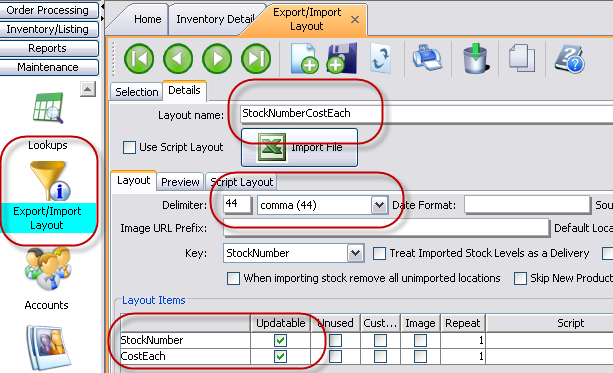
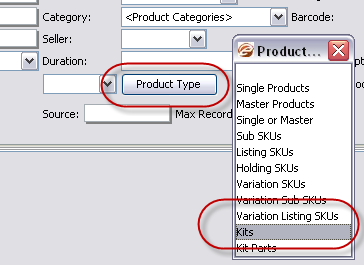
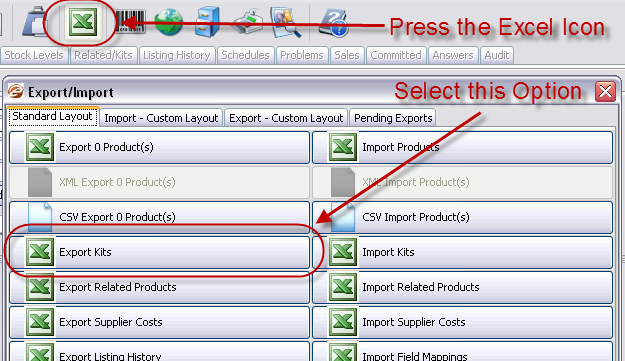
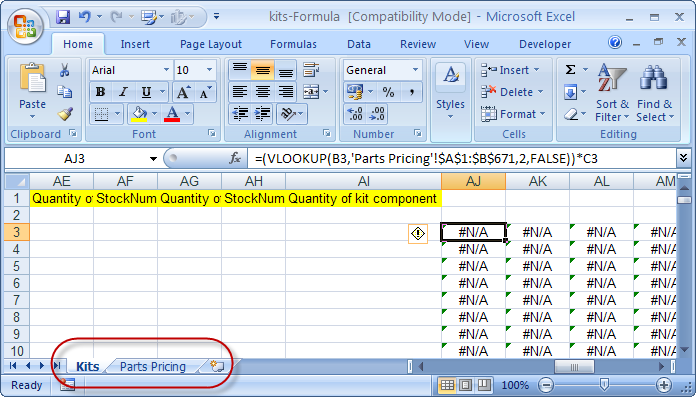
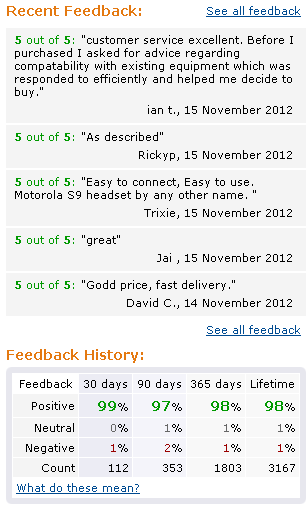


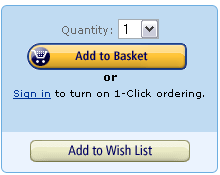 If we take a look at the normal Amazon buy box on for an item that is being sold by Amazon directly, then we can see it’s very clean.
If we take a look at the normal Amazon buy box on for an item that is being sold by Amazon directly, then we can see it’s very clean.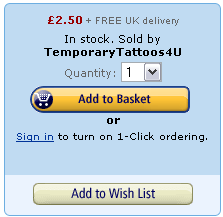
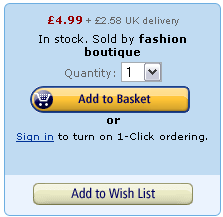 In the buy box to the right, we have a product where the seller has a delivery price entered.
In the buy box to the right, we have a product where the seller has a delivery price entered.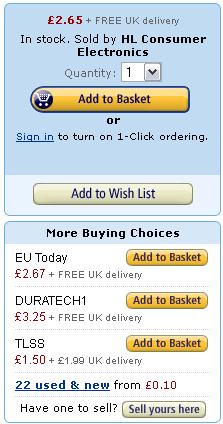 There can only be one winner and if you’re up against an Amazon stocked item or an FBA seller then the chances of you obtaining the buy box on equal total pricing, is remote.
There can only be one winner and if you’re up against an Amazon stocked item or an FBA seller then the chances of you obtaining the buy box on equal total pricing, is remote.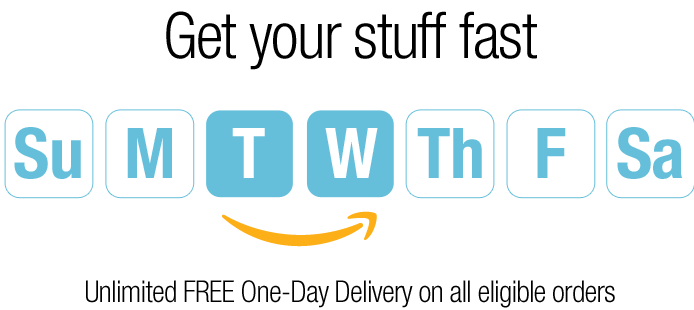 If we also account for Amazon Prime accounts, this is where an Amazon customer has paid £49 a year (or $79 in the USA) these are the power buyers on Amazon.
If we also account for Amazon Prime accounts, this is where an Amazon customer has paid £49 a year (or $79 in the USA) these are the power buyers on Amazon.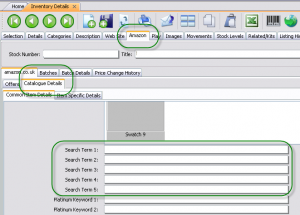 So before dig in we need to make sure that we’re all on the same sheet, literally the same import sheet.
So before dig in we need to make sure that we’re all on the same sheet, literally the same import sheet.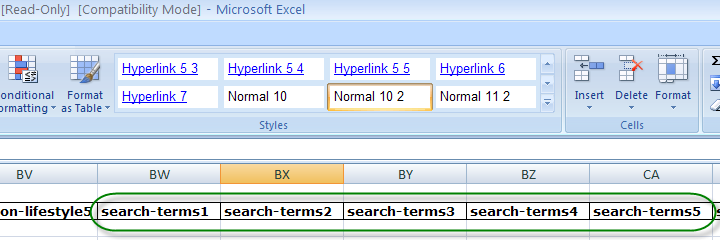

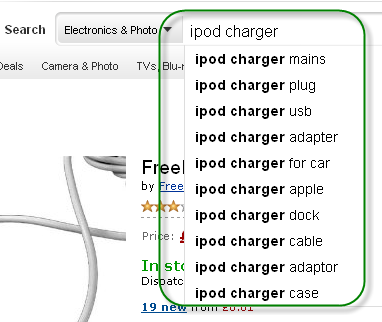 And then if you get bored or stuck with a keyword, we have the best tool available… It’s call predictive search.
And then if you get bored or stuck with a keyword, we have the best tool available… It’s call predictive search. Time, we never have enough of it and as business owners, we always wish we had more, I know I do!
Time, we never have enough of it and as business owners, we always wish we had more, I know I do!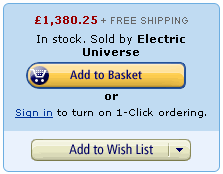 Today’s question is in relation to scoring the Amazon Buy Box for the first time in a new Amazon account.
Today’s question is in relation to scoring the Amazon Buy Box for the first time in a new Amazon account. Amazon to the best of my knowledge sand-boxed new selling accounts. This is where they trickle you sales over a long period of time to see how the business reacts to increasing sales. It’s a good system, that works and this also highlights that Amazon is focused on looking after number 1 in the equation.
Amazon to the best of my knowledge sand-boxed new selling accounts. This is where they trickle you sales over a long period of time to see how the business reacts to increasing sales. It’s a good system, that works and this also highlights that Amazon is focused on looking after number 1 in the equation.

